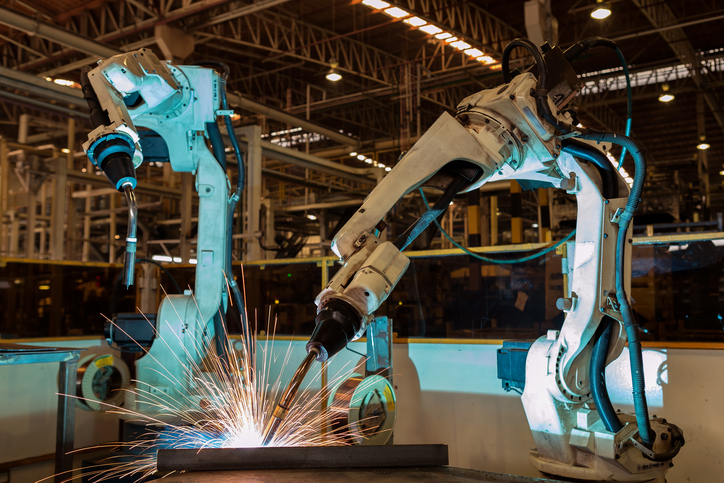The Importance of Managing Robotic Welding Workflow

When implementing robotic welding in your facility, understanding robotic welding workflow is vitally important. In most cases, welding robots will significantly increase production throughput at one point in your production process and accommodating this is necessary to achieve the full benefits of robotic welding automation.
Welding robots can create a dramatic increase in productivity, but if mismanaged, they can also create bottlenecks that didn’t exist before you automated the welding process.
Manage Robotic Welding Upstream and Downstream Processes
Regardless of how fast and consistent welding robots are in your facility, if upstream or downstream processes can’t handle the increased throughput, the benefits of robotic welding will be negated.
Upstream processes, whether automated or manual, need to be capable of introducing parts to the robotic welding process quickly and consistently. Otherwise, robotic welding will be as slow as your slowest upstream process. Similarly, if downstream processes can’t handle the number of parts put out by welding robots, the potential productivity of robotic automation is limited to what downstream systems can handle.
When implementing welding robots, assessing upstream and downstream processes is just as important as assessing the actual robotic welding workflow.
The Benefits of a Well Managed Robotic Welding Workflow
There are many benefits to properly managing the workflow of welding robots. Mainly, overall throughput is maximized when robotic welding systems are free to produce parts at their full capacity.
But more than just throughput, effective robotic welding improves product consistency and quality – robots are inherently more accurate and repeatable than manual welding processes. With no workflow constraints, these improvements impact the entire production process and give your customers a higher quality product.
A well-managed robotic welding workflow unlocks the full productivity potential of robotic automation. When upstream and downstream processes are in sync with the throughput of welding robots, the results are a highly efficient, consistent production process.
Managing the workflow of welding robots is an essential aspect of successful robotic automation. Without a whole production process prepared for the increased throughput of robotic welding, the full benefits can’t be realized.
To see real-world examples of managing robotic welding workflow, read Genesis Systems Group’s robotic welding case studies.
Posted in Robotic Welding
